 Nov 16 2021
Nov 16 2021Photographer TJ Watt wins accolades for showing the world the destruction of old-growth forests in BC
Focus on Victoria
November 12, 2021
Watt’s dramatic images of coastal forests—before and after logging—have helped everyone better understand what’s being lost.
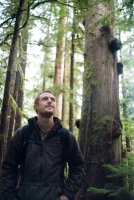
THERE WERE A FEW TIMES, as TJ Watt slogged through a sea of stumps and barren clearcuts, that he questioned whether anyone cared that trees, which had grown for centuries and supported intricate networks of species, had been destroyed forever.
“You sometimes wonder ‘why am I even doing this? Is it really making a difference,’” said Watt, a photographer and campaigner for the Ancient Forest Alliance whose dramatic before-and-after pictures of old-growth logging in BC recently went viral.
International shockwaves from his photographs of giant western red cedars in the Caycuse River watershed on southern Vancouver Island, strategically placed with after-logging images of massive stumps, helped focus attention on BC’s already controversial old-growth logging policies.
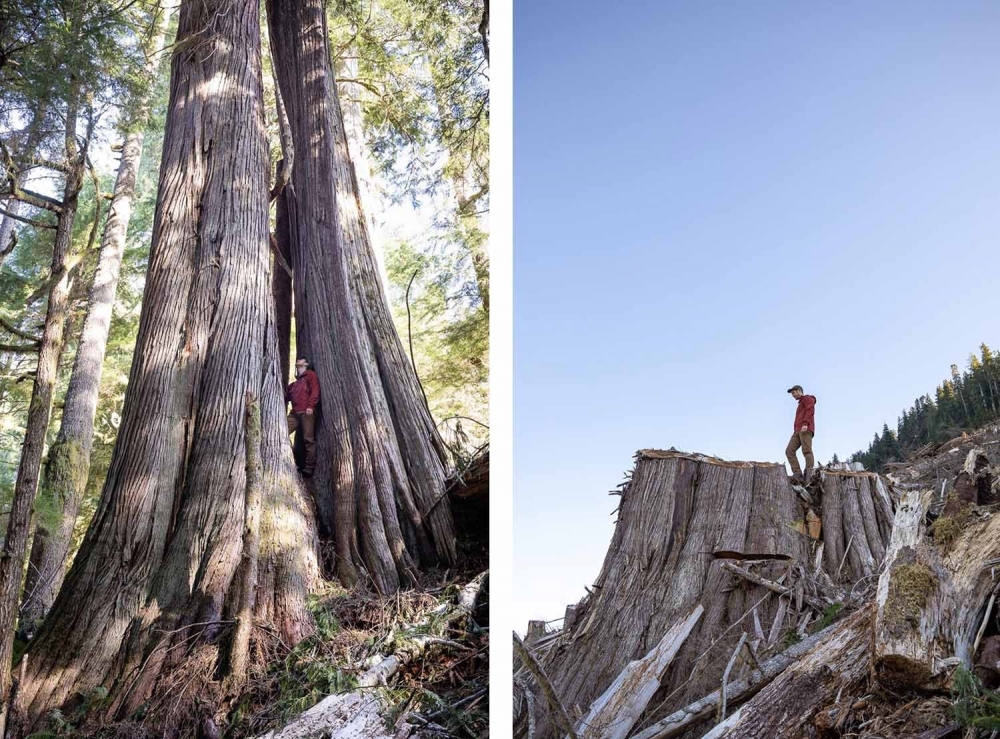
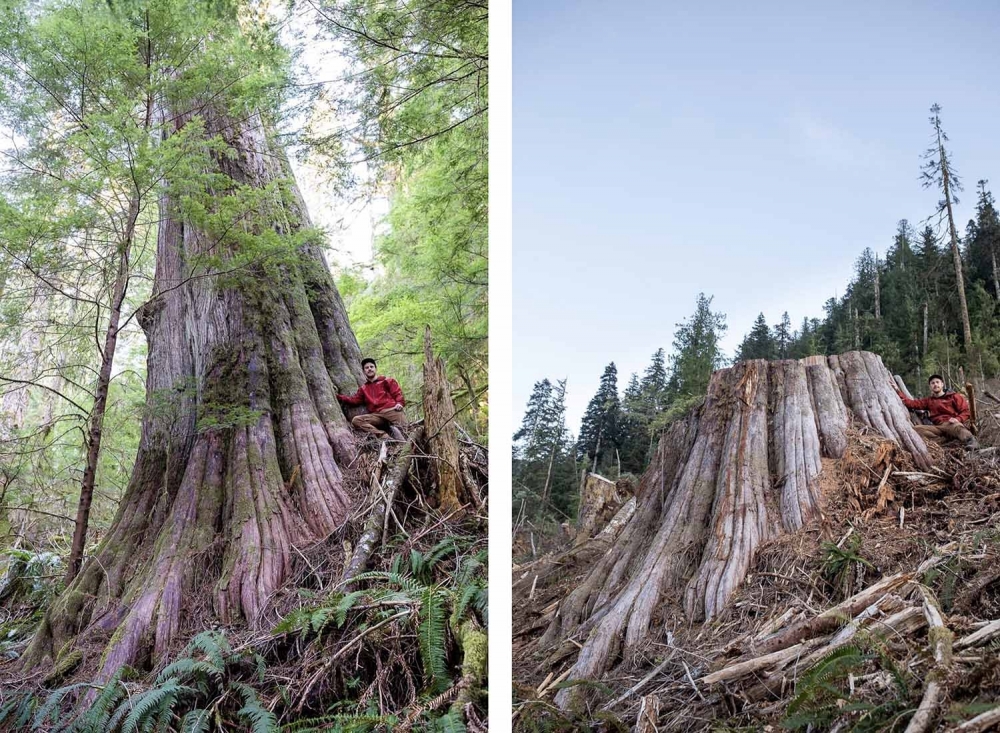
The reaction proved that, indeed, people do care.
“It says we are on the right track,” Watt said.
The images appeared in several major magazines and were recognized in three international photo competitions. Then, in October, Watt was named as a National Geographic Explorer and Royal Canadian Geographical Society Explorer.
Watt will also receive a Trebek Initiative grant, which will help fund more expeditions into remote areas where, out of sight of the general public, old-growth is being logged.
He hopes the recognition will allow him to reach a wider audience. “I think it just goes to show that this is truly a globally significant issue. These are some of the Earth’s largest and oldest trees and, here we are in a first-world country, and it is still legal to cut them down,” said Watt.
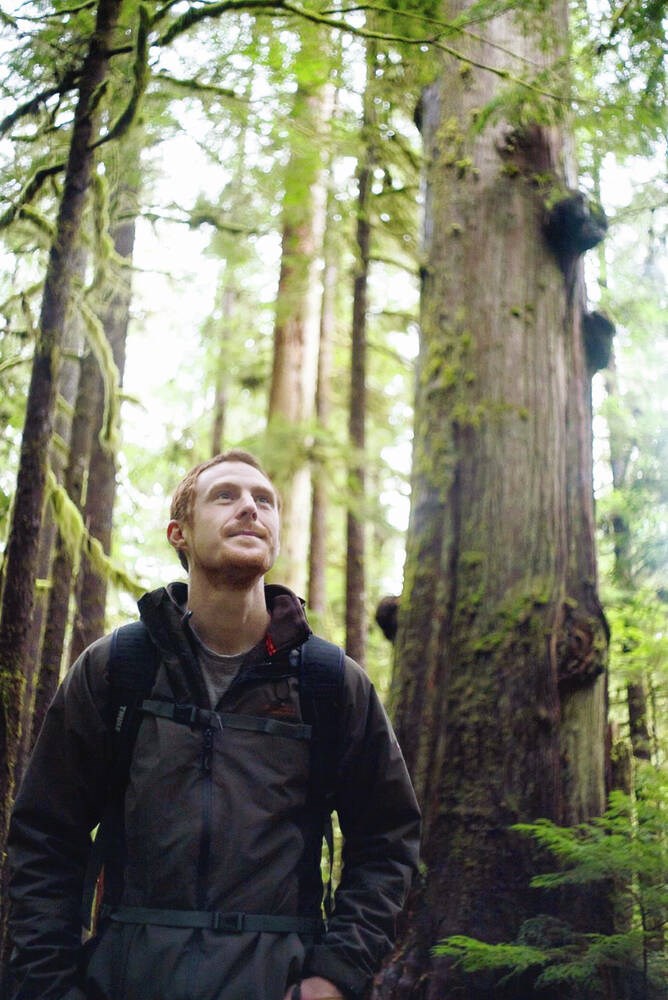
The Trebek Initiative is named after Alex Trebek, the Canadian host of the popular television show Jeopardy, who died earlier this year. Trebek was an honorary president of the Royal Canadian Geographical Society and the grants, awarded for the first time this year, support explorers, scientists, photographers, geographers and educators who use storytelling to ignite “a passion to preserve.”
The recognition comes shortly after Watt’s latest release of photographs that are breath-taking for all the wrong reasons.
The pictures of scalped hillsides along the upper Mahatta River on northwestern Vancouver Island immediately drew horrified condemnation of BC’s old-growth forestry policies.
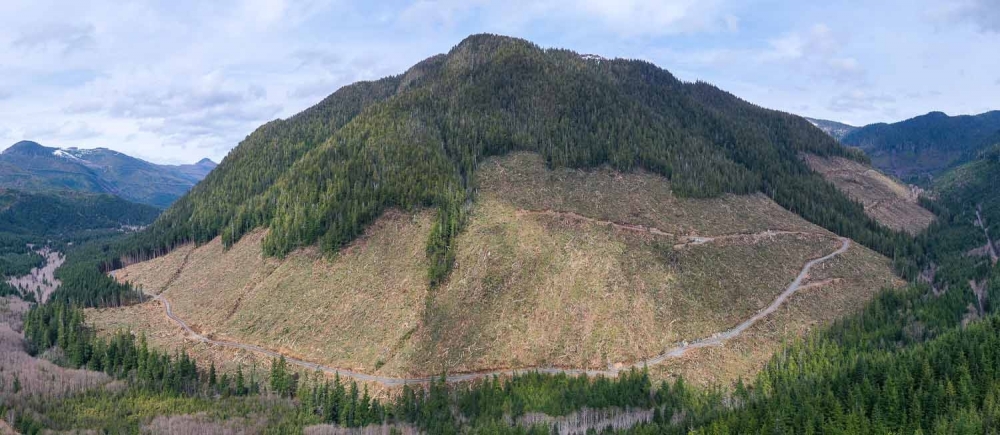

About 50 hectares around the Mahatta River, within the territory of Quatsino First Nation, was auctioned off by BC Timber Sales, and the photos show the raw reality of clearcutting, with slopes and the valley bottom denuded of old-growth trees, leaving only giant cedar stumps.
“[The photos] really struck a nerve with people. A lot of people see those images and think ‘didn’t we stop clearcutting like that back in the 1990s?’” Watt said.
The trees were cut last year and this year—after the Province received the Old Growth Strategic Review which called for a paradigm shift in the way BC manages ancient forests.
“This is one of the most atrocious examples of logging that I’ve seen in more than a decade,” said Watt, 37, who has worked on photography projects for the Ancient Forest Alliance since 2010.
The Province has committed to implementing the panel’s 14 recommendations, but, in the meantime, old-growth logging has accelerated and Forests Minister Katrine Conroy confirmed last month that, out of a total annual cut of about 200,000 hectares, 55,000 hectares are old growth.
Historically, before commercial logging, there were about 25-million hectares of old growth and government figures now put BC’s total forest at 56.2 million hectares of which 11.1 million hectares is old growth (not the 13.7-million hectares that government previously estimated).
The definition of coastal old growth is a forest with trees that are at least 250 years old and, in the Interior, trees that are at least 140 years old.
It’s too late for the Mahatta River forest, but Watt is holding out hope that people will no longer put up with such destruction elsewhere.
“The world is watching right now,” he said
“I’m hoping that the pressure of these images and the rest of the photographs we have been sharing are enough to push the government in the direction of doing the right thing.”

From skate-boarding hippie to making a difference with pictures
Watt’s interest in photography, which morphed into his crusade for old growth, started when he was a skate-boarding teenager, sporting dreadlocks and living in Metchosin.
“Like every young photographer, I figured I wanted to travel the world and shoot photos of far-flung places, but after a few months doing that and then coming home I realized the landscape in the forests right in my own back yard on Vancouver Island, are second to none and I decided to really focus my efforts here,” he said.
That commitment was cemented by a stint at the now-defunct Western Academy of Photography.
“It gave me a year to focus specifically on photography instead of doing all the construction and landscaping jobs I was doing. I knew I wanted to do photography related to nature and photography with a real purpose,” he said.
It was a decision that worried his family, Watt admits.
“If you tell your parents that you’re going to be an artist that saves trees and that’s how you’re going to make a living, they definitely roll their eyes at you and look concerned and worried,” he said.
“But, I can say, more than a decade later, they’re some of the proudest people around. You sometimes really do have to follow your gut, follow your dreams and believe it’s all going to work out.”
Andrea Kucherawy was program manager at the Western Academy of Photogaphy when Watt arrived as a student and she watched his potential develop.
“He definitely stood out for me,” said Kucherawy who has avidly followed his career.
Watt’s interest in environmental photography paralleled his interest in sports such as skateboarding, said Kucherawy, who is pleased he took the environmental route.
“I honestly don’t think we would be where we are now without the work he has done,” she said.
“People need a visual, a comparison and his before-and-after work often includes a human element to give a sense of scale and I think that’s what’s really empowering for the cause,” she said.
Ken Wu, who co-founded the Ancient Forest Alliance and is now executive director of the Endangered Ecosystems Alliance, first met Watt when he (Wu) was executive director of the Victoria chapter of the Wilderness Committee.
“He was this skateboarding hippie who always had a camera with him and he liked to take pictures of all the protests we were organizing,” Wu said.
“Then I sent him into the woods to take pictures of the old-growth forests and to build trails and it turned out that he had a great aptitude for trail building and outdoor activities in rugged landscapes,” he said.
When Wu split from the Wilderness Committee, one of his first moves was to hire TJ as the Ancient Forest Alliance’s first staff member.
One of the most celebrated early campaigns was sparked by the duo’s discovery of Avatar Grove, near Port Renfrew. TJ’s photos of the huge, gnarly trees and untouched forest, which was slated to be felled, sparked massive public interest.
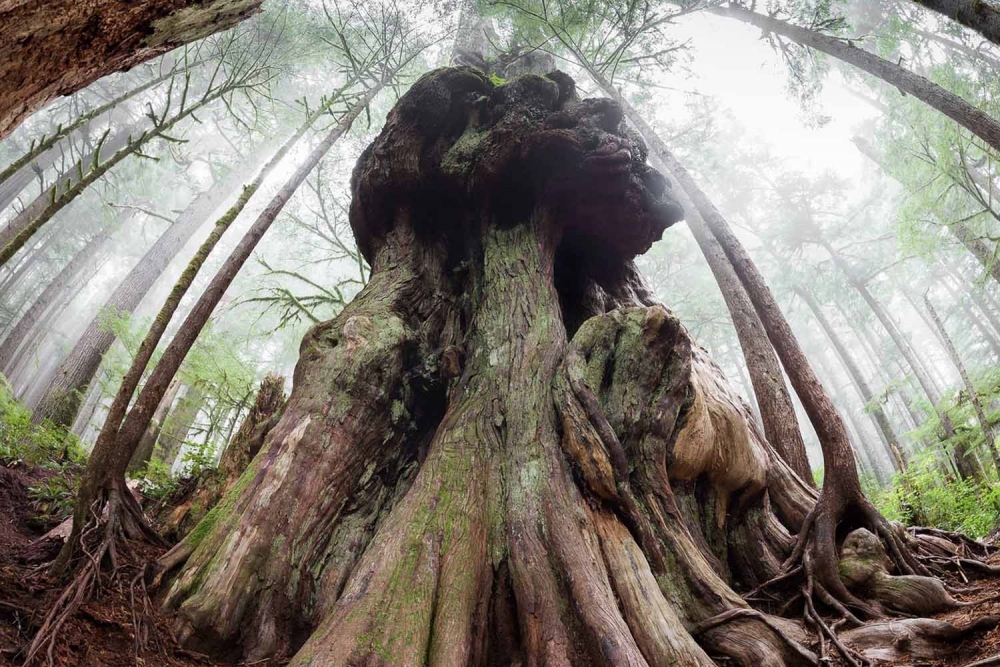

Avatar Grove has now become a tourist attraction and was pivotal in the transformation of Port Renfrew from a logging town to a destination for people who want to see big trees.
It was the right time in history, noted Wu: the movie Avatar—which has a story line about saving a forest on another planet—was taking the world by storm; and TJ’s growing camera skills, combined with the rise of Facebook, allowed his photos of the discovery of a spectacular grove of trees in an accessible area to be shared around the world.
“I recognized that TJ’s photos could be news media in and of themselves because they could be shared on that new platform,” Wu said.
“They really hit home. It’s a visual shock. It’s like harpooned whales or rhinos with their horns cut off, you get it a lot more quickly than all of my emails about productivity distinctions and tenure regulations,” he said.
Edward Burtynsky, one of Canada’s best-known photographers, who focuses on global industrial landscapes, came across TJ when he was looking at photographing big trees and BC’s northern rainforest.
All his research led to TJ and a loose collaboration started, said Burtynsky, who was impressed with the power of the photographs and the direction of the Ancient Forest Alliance campaigns.
“When you name an area and name a tree it’s a really powerful way to save them,” he said.
Now, in the age of iPhones, images have become one of the most powerful and fluid forms of communication, putting eyes on parts of the world that most people cannot witness first-hand, Burtynsky said.
“Those before-and-after images I believe really drive the point home. You look at a tree that is 500, 700 or even 1,000 years old that sprouted before the medieval age and is now going to be sent somewhere else—not even here—to be cut into boards for decking. There’s something terribly wrong with that image,” he said.
“I can’t see a more compelling way to tell that story than letting people look at that majestic tree and then [look at it again] after the loggers have been in.”
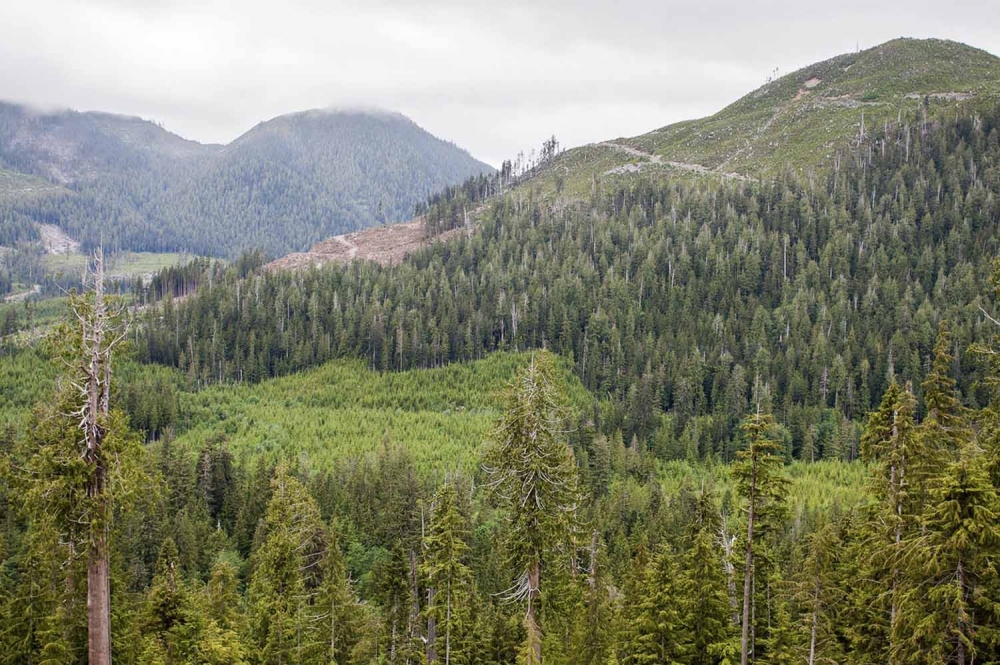
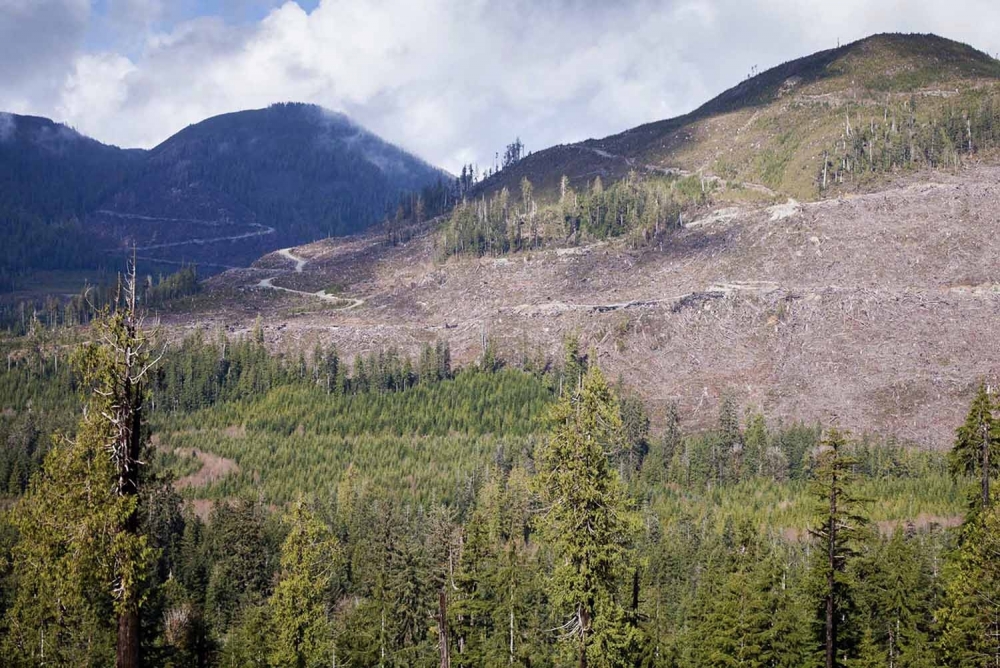
Sonia Furstenau, leader of the BC Green Party, said Watt’s photographs illustrate the gap between logging practices on the ground and the story that government tries to tell.
“Thirty years ago, the world was paying attention because we were clearcutting old-growth forests. Well, nothing has changed,” she said.
“We have accepted this approach to forestry that puts mechanization and efficiency above, not only ecosystem protection, but also above jobs,” said Furstenau, pointing out that increasing volumes of timber are being cut with fewer and fewer people working in the industry.
“When you see these images that TJ has so beautifully captured of before and after, what he shows is the real devastation of these logging practices,” Furstenau said.
A huge emotional toll in witnessing the destruction
The accolades for Watt come at a pivotal point as the provincial government announced in early November that logging will be deferred on 2.6 million hectares of old growth for two years while it consults with the province’s 204 First Nations.
The deferrals are based on new mapping, identifying areas of old growth where there is imminent risk of biodiversity loss. BC Timber Sales, the government agency that hands out logging contracts for 20 percent of the province’s annual allowable cut—and which has been heavily criticized for auctioning off some of the most controversial areas of old growth—will immediately stop advertising and selling parcels in the deferral areas.
It is positive that government is now using independent mapping, based on science, to identify old-growth forests at risk and that mapping confirms that many of BC’s forests are at risk of irreversible biodiversity loss, Watt said.
However, details and provincial funding are missing although the federal government has committed $50-million to help protect BC’s ancient forests, noted Watt.
“Without a matching provincial commitment of several hundred million dollars in conservation funding, with a primary focus on First Nations economic relief linked to deferrals, the full scale of the deferrals and eventual permanent protection will be impossible to achieve,” he said.
“We have the road map in hand, but we’re missing the gas in the tank,” he said.
That means the clock is ticking as the ever-shrinking remains of BC’s old-growth forests are continuing to fall and Watt suspects it will be impossible to avoid more before-and-after pictures—and they are never easy.
The chance to inform the public about forestry practices in the hidden corners of the province is a privilege, but it leaves scars, Watt admits.
“There’s a huge emotional toll and compounding ecological grief to witnessing the disappearance and destruction of these truly irreplaceable forests,” he said.
“It even causes a lot of anger, because I know that every day there’s a delay in ensuring these forests are protected, some of them are gone forever. Trees may come back, but never the ancient forests that are so humbling and awe-inspiring.”
As an example, he described how retracing his steps through the Caycuse after the machines had done their worst, was like looking at the death of old friends.
The idea of irretrievable loss when old-growth forests are cut was echoed by Gary Merkel, one of the authors of the Old Growth Strategic Review and a member of the technical advisory panel on the recent deferrals.
Speaking at the news conference Merkel emphasized the importance of the underlying ecosystems in old-growth forests: “Some of our ecosystems in British Columbia remain relatively undisturbed since the last ice-age, more than 10,000 years,” he said.
“We can grow new trees, they are renewable. These ecosystems, in most cases, are not renewable. They will never come back in a lifetime and possibly ever because of climate change,” he said.
Watt’s photographs have helped make British Columbians aware of what was happening in the remote reaches of Vancouver Island. Despite the toll, Watt is committed to continuing his work on behalf of the forest: “Unless we go on these trips to try to expose them, the forests would disappear without anybody knowing about it.”
Read the original article





